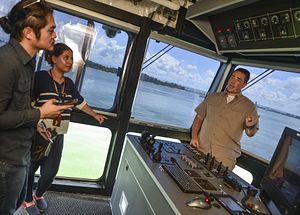This week, the United States and Brunei kicked off their first army exercise. While the engagement itself was just one of the activities that the two countries hold within their broader defense relationship, it nonetheless spotlighted the state of ties between them amid wider bilateral and regional trends underway.
As I have noted before in these pages, the United States and Brunei – a small but nonetheless important player on a range of regional security issues, from terrorism to the South China Sea – already have a defense relationship, which includes bilateral components such as ship visits, staff talks, and exchanges, along with other wider multilateral components as well such as the Southeast Asian state’s involvement in the Cooperation Afloat Readiness and Training (CARAT) exercise and the Southeast Asia Cooperation and Training (SEACAT) drills.
That relationship has continued on through 2018 with some indications of expansion. For example, just this August, Brunei and the United States held the first bilateral training exercise between their two armies as part of Pacific Pathways, an annual military exercise that the United States has held since 2014 which includes several strategic deployments around the Pacific. This was in addition to other bilateral and multilateral defense engagements both sides have had, including the 17th iteration of SEACAT and the 26th biennial Rim of Pacific (RIMPAC) exercise.
This week, the relationship was in the spotlight again with the holding of this year’s iteration of the CARAT exercise between the two countries, as had been expected following the organization of planning conferences in July and September. The 24th iteration of CARAT Brunei kicked off at Muara Naval Base in Brunei on November 12 and will last until November 16.
According to Brunei’s defense ministry, the full range of activities during the CARAT exercise will include company attack & area clearance jungle training, improvised explosive device detection and awareness, sea evolutions, and legal and medical symposiums. It features participation from several institutions including all three services, the military police, the military medical services, the police force, maritime port authority, and fisheries department.
Significantly, the U.S. Navy mentioned that the sea phase of CARAT Brunei will take place in the South China Sea, a detail missing from the official Brunei account of the exercise. The sea phase will feature a range of engagements including a tracking exercise (TRACKEX) aimed at increasing both navies’ ability to together track and pursue targets through the coordinated deployment of surface ships and maritime patrol aircrafts, anti-air warfare (AAW) exercise to increase proficiency in missile defense, and division tactics (DIVTACS) designed to enhance communication as ships sail together in complex maneuvers. CARAT Brunei this year features ships and aircraft from both sides, and on the U.S. side, it will include the expeditionary fast transport ship USNS Fall River (T-EPF-4) and a P-8A Poseidon maritime patrol aircraft.
To be sure, the engagement itself was one of the many ongoing interactions between the United States and Brunei. Nonetheless, the holding of this year’s CARAT Brunei exercise deserves mention within the broader perspective of both developments in the bilateral relationship itself as well as those in the wider region.































